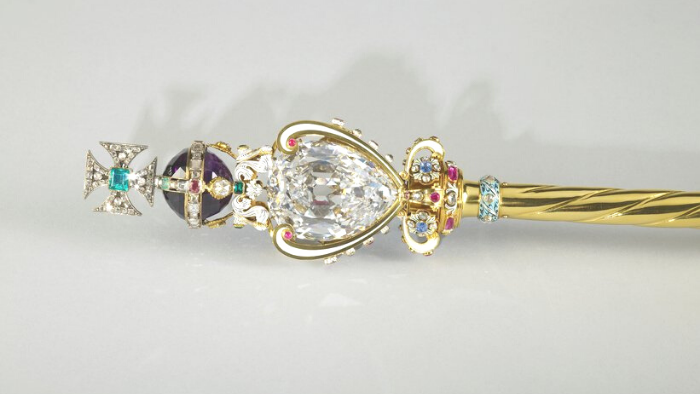Diamonds in wedding rings signify permanence and resilience in a relationship. Such splendor is yet to lustre when these sparkling gemstones are unearthed and uncut. Which begs the question—how do we identify a diamond in the rough? If you caught yourself between two stools asking, do lab-grown diamonds stand a fair ground with mined diamonds? It’s a bone of contention we wouldn’t want to keep.
Identifying a diamond in the rough is an uphill task to accuracy. There are four important factors following this: (1) location, (2) form, (3) carat value, and (4) how diamonds play in the jewelry industry.
 Image source: https://www.wired.com/2017/05/crazy-eruptions-spit-diamonds/
Image source: https://www.wired.com/2017/05/crazy-eruptions-spit-diamonds/
Let’s start looking at kimberlite pipes (geologically found in stable portions of continents) where most diamond deposits are sourced. Kimberlite pipes are vertical structures of volcanic origin and were first recognized in Kimberley, South Africa—hence, the name. These can be found in Japan, Canada, Australia, China, Europe, Russia, Indonesia, and there are kimberlite pipes in the Philippines too! Meycauayan, Bulacan is famous for its jewelry industry especially in the trendsetting of diamonds. So, if you are in the look for a purchase of exquisitely certified natural diamond and handmade jewelry for your wedding rings, visit Meycauayan Jewelries now!
Diamonds, from extreme pressure and temperature, form isometric crystals of pure carbon atoms measuring similarly in all directions around their center. This separates the diamonds from the often confused quartz which forms hexagonal crystals typically terminating on one end. The specific gravity of diamonds ranges from 3.1-3.5 g/cm³, in which, through a sluice or panning method a diamond travels up the shaker table accordingly. Now, if you did find a diamond over 8mm (3/8 of an inch) in excess of 2 grams (10 carats), that’s extremely rare! Know that corundum (9Mohs) can scratch itself and everything else softer which means it won’t even scratch a real diamond. Diamonds cleave smooth and flat surfaces when they break. Should your sample gem have curved conchoidal surfaces then it’s definitely not a diamond.
Given that natural diamonds take millions and billions of years to form, every carat is extremely valuable. Today, lab-grown diamonds set the environmental-friendly trends and stand on equal footing in terms of form and elegance. The Cullinan Diamond, named after Thomas Cullinan (Mine Chairman, Premiere Mine), was the largest gem-quality rough diamond up to date. It weighs 3,106.75 carats (621.35 g) and was unearthed in South Africa in 1905. This behemoth is cut into 105 stones. The well-known Cullinan I (approximately 530 carats) is worth a ballpark figure of £40.9 million. Queen Elizabeth II must be dazzling with the Sovereign’s Sceptre and the Solitaire Diamond both in her hands.
 Image source: https://www.rct.uk/collection/31712/the-sovereigns-sceptre-with-cross
Image source: https://www.rct.uk/collection/31712/the-sovereigns-sceptre-with-cross
Should you, against all odds, find a real diamond, the industry requires a certification by the Gemmological Institute of America (GIA). As scientific tests require laboratory equipment and experts, GIA will test and identify your sample gem unscathed. This certification proves the authenticity of your find. Buyers will then take serious interest in purchasing your diamond. Now you won’t need to rake yourself over the coals as to why a diamond is revered in any era! Check out Meycauayan Jewelries for a trustworthy experience of certified natural diamond by GIA for your wedding rings now!



